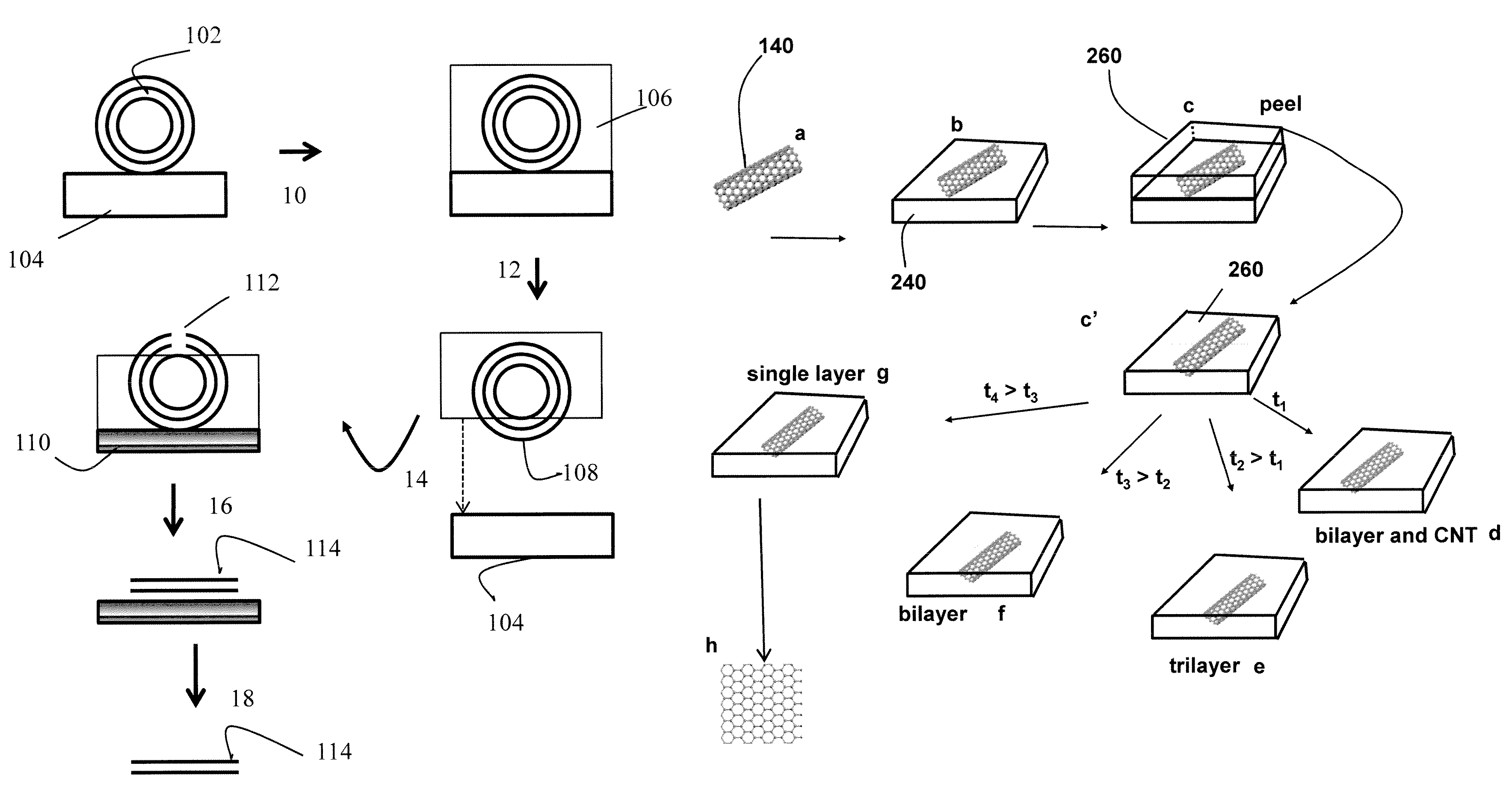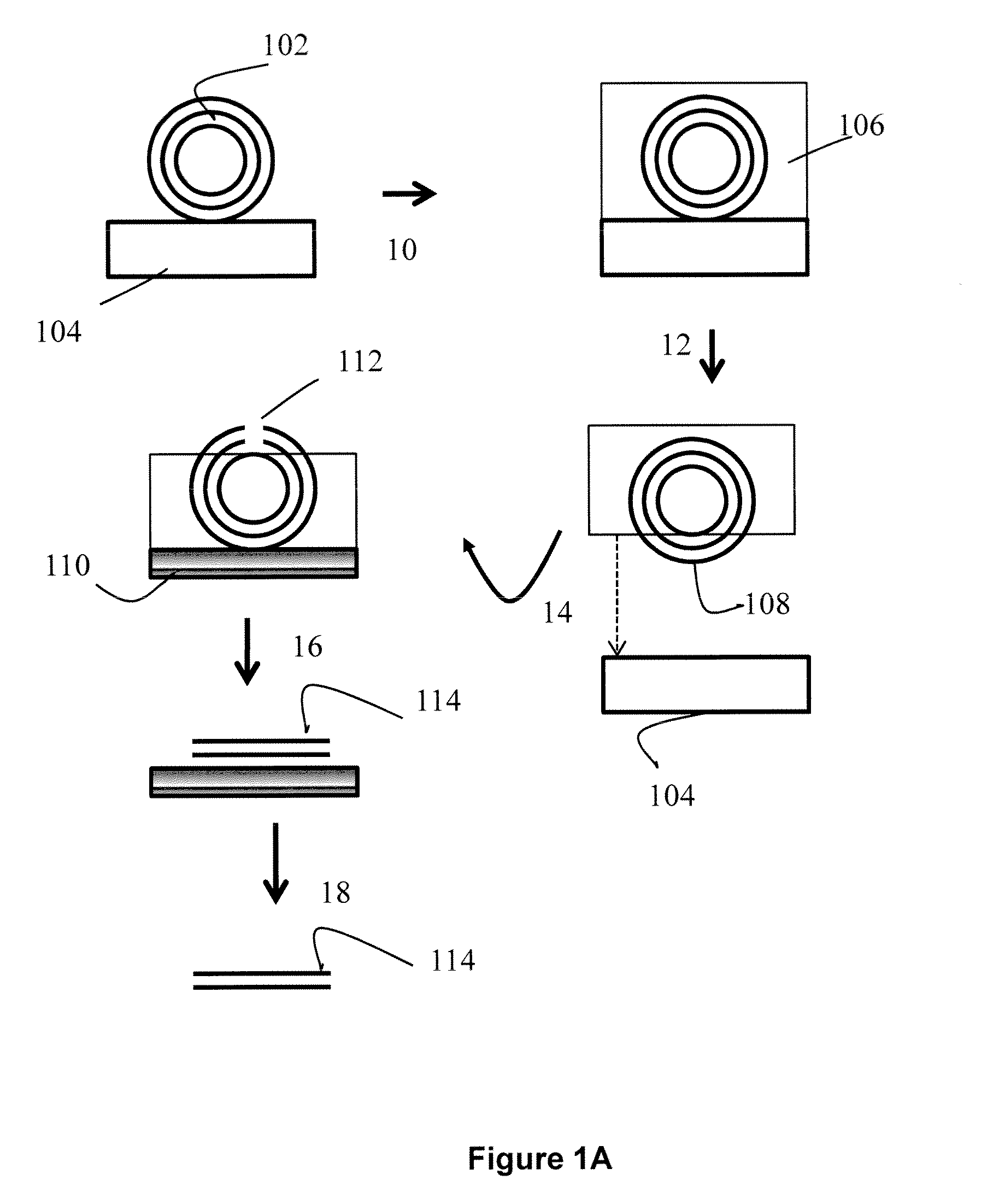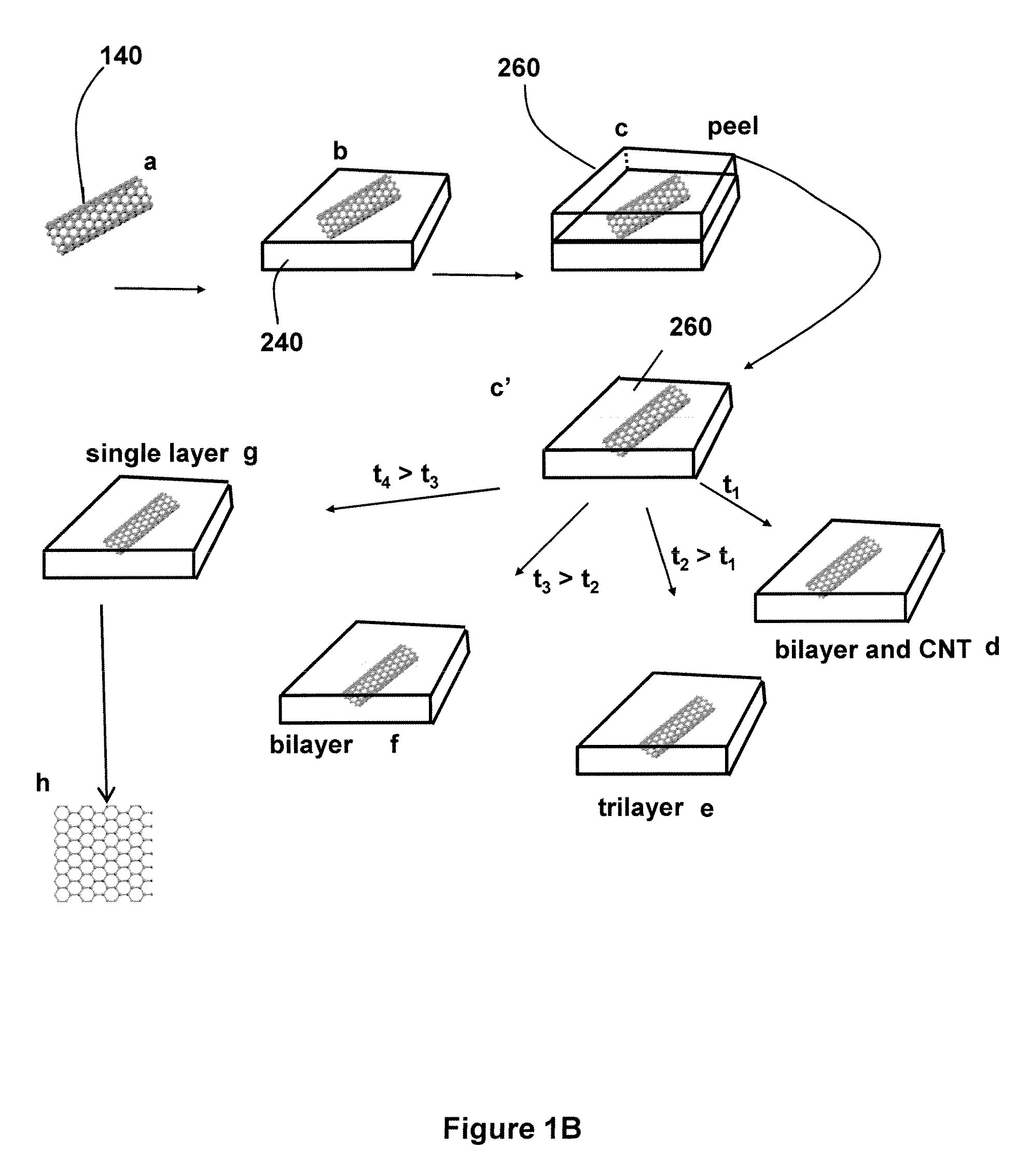Narrow graphene nanoribbons from carbon nanotubes
a graphene nanoribbon and carbon nanotube technology, applied in the field of materials, can solve the problems of oxidized and defective gnrs, difficult to clean gnrs using lithographic, chemical or sonochemical methods, and limited gnr width and smoothness,
- Summary
- Abstract
- Description
- Claims
- Application Information
AI Technical Summary
Benefits of technology
Problems solved by technology
Method used
Image
Examples
example 1
Preparation of GNRs
[0088]1 mg of MWNTs was dispersed in 10 ml of 1% Tween 20 aqueous solution by sonication for 5 min and then centrifugation at 16,400 g for 10 min to remove aggregates. The MWNT suspension was deposited onto a Si substrate pretreated with 3-aminopropyltriethoxysilane (APTES, 12 ml in 20 ml of H2O), rinsed with water and then blow-dried. The sample was then calcined at 350° C. for 10 min to remove the Tween 20. A PMMA solution (relative molecular mass, Mw 5495,000; 5% in anisole) was spin-coated on MWNTs on the substrate at 3,000 rounds per minute for 1 min and then baked at 170° C. for 2 h on a hot plate. The PMMA-MWNT film was peeled off in 1M KOH solution at 80° C. (Jiao et al 2008 J. Am. Chem. Soc. 130:12612). Then the film was rinsed with water and contact-printed onto a Si substrate. To make the film well-adhered to the Si substrate, the sample was heated at 80° C. for 10 min in an oven. Ten-watt Ar plasma was used to etch the PMMA-MWNT film at the base pressu...
example 2
Histograms of Pristine MWNTs and GNRs
[0089]The diameter of more than 100 MWNTs (Bucky tube, Aldrich) on Si substrate was measured with atomic force microscopy (AFM). FIG. 3A shows the diameter distribution of pristine MWNTs. The distribution of diameters ranged from 4 to 18 nm and the mean diameter was ˜8 nm. Because of the difficulties of distinguishing multi-layer GNRs from GNRs with CNTs cores by AFM, only the widths and heights of single or few-layer GNRs were measured (height <2 nm). As shown in FIG. 3B, the widths of most GNRs were in the range of 10 to 20 nm. The heights of GNRs distributed around three discrete values, i.e., ˜0.8 nm, 1.3 nm and 1.8 nm (FIG. 3C), which were assigned to single, bi- and tri-layer GNRs, respectively. Most GNRs obtained were single and bi-layer.
example 3
Yield of Single- and Few-Layer GNRs
[0090]The yield of single and few-layer GNRs was determined by the diameter, number of shells of the starting MWNTs and the etching time. The yield of GNRs with high quality was ˜20% after etching for 10 s. By assuming that the width of GNRs was comparable with half of the circumference of the starting MWNTs, that GNRs with a width of 10-20 nm were estimated to be converted from MWNTs with a diameter of 6-12 nm. From the diameter distribution of MWNTs (FIG. 3A) ˜40% of pristine MWNTs had a diameter of 6-12 nm. However, the number of shells of MWNTs varied even with the same diameter and only few-walled CNTs could generate single or few-layer GNRs. Therefore, the yield of single and few-layer GNRs was much lower than 40%.
PUM
| Property | Measurement | Unit |
|---|---|---|
| width | aaaaa | aaaaa |
| width | aaaaa | aaaaa |
| narrow width distribution | aaaaa | aaaaa |
Abstract
Description
Claims
Application Information
 Login to View More
Login to View More - R&D
- Intellectual Property
- Life Sciences
- Materials
- Tech Scout
- Unparalleled Data Quality
- Higher Quality Content
- 60% Fewer Hallucinations
Browse by: Latest US Patents, China's latest patents, Technical Efficacy Thesaurus, Application Domain, Technology Topic, Popular Technical Reports.
© 2025 PatSnap. All rights reserved.Legal|Privacy policy|Modern Slavery Act Transparency Statement|Sitemap|About US| Contact US: help@patsnap.com



